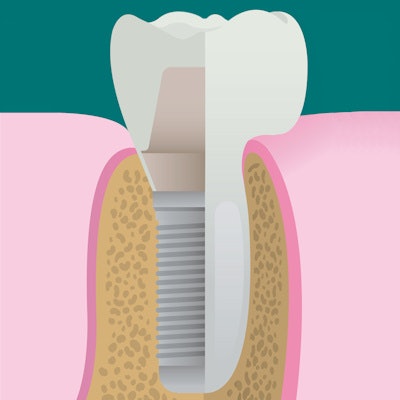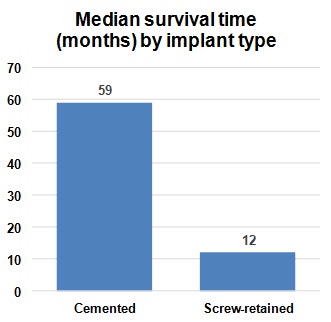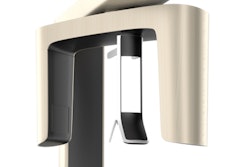
Screw-retained implants fracture sooner than cement-retained ones, and fractures are more likely to occur in the premolars and molars, according to a new study on implant fractures.
Although implant fracture is rare, it can have serious consequences for both clinicians and patients. Therefore, the study authors wanted to find associations between failed implants to identify potential trends and warning signs of failure. They reported their findings in the Journal of Oral and Maxillofacial Surgery (May 23, 2017).
"Despite being rare, the occurrence of implant fracture remains a distressing complication of dental implant treatment," wrote the authors, led by Reza Tabrizi, DMD, an assistant professor at the Shahid Beheshti University of Medical Sciences in Tehran, Iran. "According to our results, the time of implant fracture was significantly shorter in screw-retained implants than cement-retained types."
Implant fracture trends
When an implant fracture occurs, it often results in the loss of both the implant and the prosthesis. To help prevent these failures, the researchers conducted a retrospective cohort study to evaluate what factors are associated with implant fractures.
Their study included 18,700 patients who had implants placed at the Shahid Beheshti Dental School and GD Implant Clinic between 2000 and 2016. The researchers analyzed how many implants failed because of fracture and also if any trends were associated with these failures.

Overall, only 0.2% of the patients experienced implant fractures that were not due to trauma. Of the 37 patients who did experience a fracture, screw-retained implants fractured significantly sooner than cemented-retained one, the only significant time difference the researchers found. Furthermore, screw-retained crowns had a 297% increase in fracture risk compared with cemented crowns (hazard ratio of 296.5).
“The occurrence of implant fracture remains a distressing complication.”
"Screw-retained implants have more technical complications than cement-retained types with more marginal bone loss," the study authors wrote. "In cement-retained abutments, excessive occlusal stress can lead to crown separation from the abutment or loosening but without excessive stress on the fixtures."
The additional tension for screw-retained implants may be why they fracture sooner, the authors suggested. They also noted that a loose screw could be a warning that an implant may break due to stress.
"The stress produced by retaining screws of prosthesis with a nonpassive fit may place constant tension on implants, predisposing them to fracture," the authors wrote. "Screw loosening often precedes implant fracture and could be considered a warning sign."
Furthermore, 95% of all fractures occurred in the premolars and molars, which the authors attributed to stress associated with eating.
"In the molar and premolar regions, chewing forces and lateral movement with cusp inclination produce undesirable forces," they wrote.
Further studies needed
The authors were unable to study variables at the time of placement, including the amount of force used and surgeon experience. They noted that this was a major limitation of their study and that future researchers should evaluate how those factors, particularly placement force, affect future implant fracture.
"According to this study ... [implants] with screw-retained prostheses may fracture sooner after implant loading," the authors concluded. "The incidence of implants fractures was high in the molar and premolar areas."



















